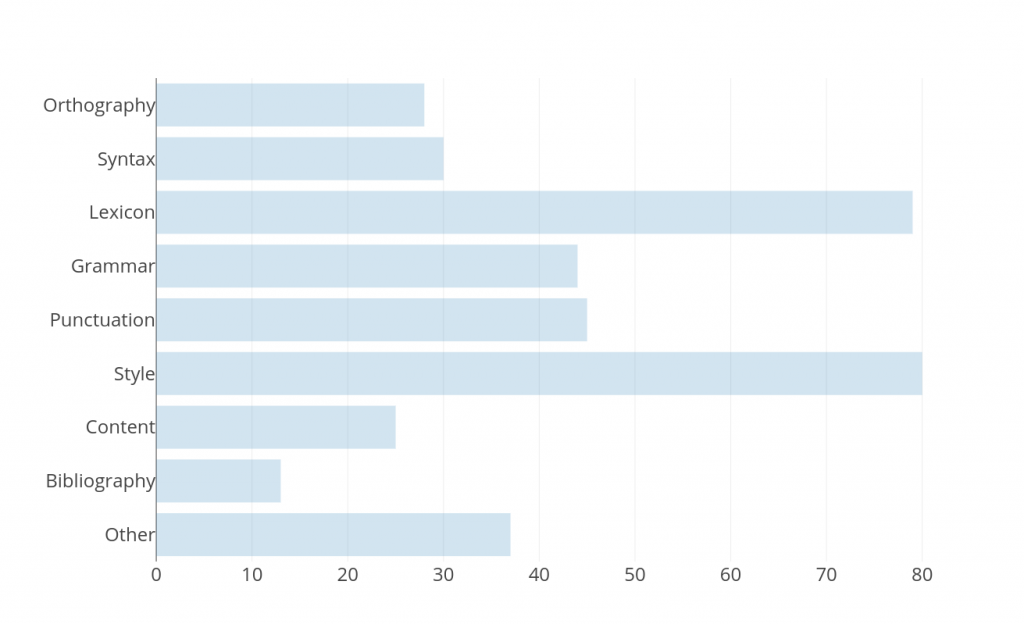The Berlin School of Library and Information Science has had a theoretical look at the way proofreading is organised at Language Science Press, resulting in a BA thesis by Lole Westedt entitled
Community Proofreading am Beispiel Language Science Press: „Gratis-Korrekturlesen“ oder auch inhaltlich anreichernd?
[Community proofreading as used by Language Science Press: Only cost-free copy-editing, or also additional improvement of content?]
This study evaluates in how far the way we integrate the community in the proofreading of our books via PaperHive can be seen as a type of (content) open review, and what types of community comments we find (typos, wording, specialist suggestions). We have described our approach to community proofreading in a couple of blog posts:
- Axes of Open Review
- Open authoring as the obvious next step in open publishing
- Document life cycles and fluid publication
- Experiences with open review and community proofreading
- What it means to be open and community-based
This thesis by Lole Westedt puts our efforts in a broader context and finds that, actually, what we call “Community Proofreading” meets 6 out of 7 criteria of Ross-Hellauer‘s list of Open Review dimensions:
- Open identities: Authors and reviewers are aware of each other’s identity
- Open reports: Review reports are published alongside the relevant article.
- Open participation: The wider community are able to contribute to the review process.
- Open interaction: Direct reciprocal discussion between author(s) and reviewers, and/or between reviewers, is allowed and encouraged.
Open pre-review manuscripts: Manuscripts are made immediately available (e.g., via preprint servers like arXiv) in advance of any formal peer review procedures.- Open final-version commenting: Review or commenting on final “version of record” publications.
- Open platforms: Review is de-coupled from publishing in that it is facilitated by a different organizational entity than the venue of publication.
Westedt then had a look at a sample of 10 books, from which she selected 1 chapter each and analysed the comments she found.
In total 15 (7 female, 8 male) proofreaders contributed, with affiliations in Germany, Switzerland, Poland, the Netherlands, France, Italy, Spain, Portugal, Sweden, USA, and Australia. This is a nice and diverse set of countries. They made a total of 381 annotations in those 10 chapters, averaging 1.67 annotations per page. Westedt sorted the comments into the following categories;
Most of this is not surprising, but the relevant part are the 25 comments relating to content (6.56%), which, according to Westedt, would not have been expected in a normal copy-editing process. These comprise suggestions for alternative translations of Chinese; an additional reference to literature which was missing; or the request to provide another example altogether since the example chosen simply did not prove the point.
Her conclusion is, then: 1) Our community proofreading is actually a type of open review and 2) it contains significant parts of content quality assurance and goes beyond normal copy-editing. This is in line with the observations Stefan Müller made some time ago. She also finds that the heterogeneous pool of proofreaders from diverse backgrounds and countries leads to a diversity of comments which reflects the future readership (and the problems future readers might encounter) better than what could be expected from a single proofreader.
You can read the thesis on PaperHive, and, with form and content in tune, you can openly comment on the results there as well. Of course, more general comments are always welcome in the comments section of this blog post.

